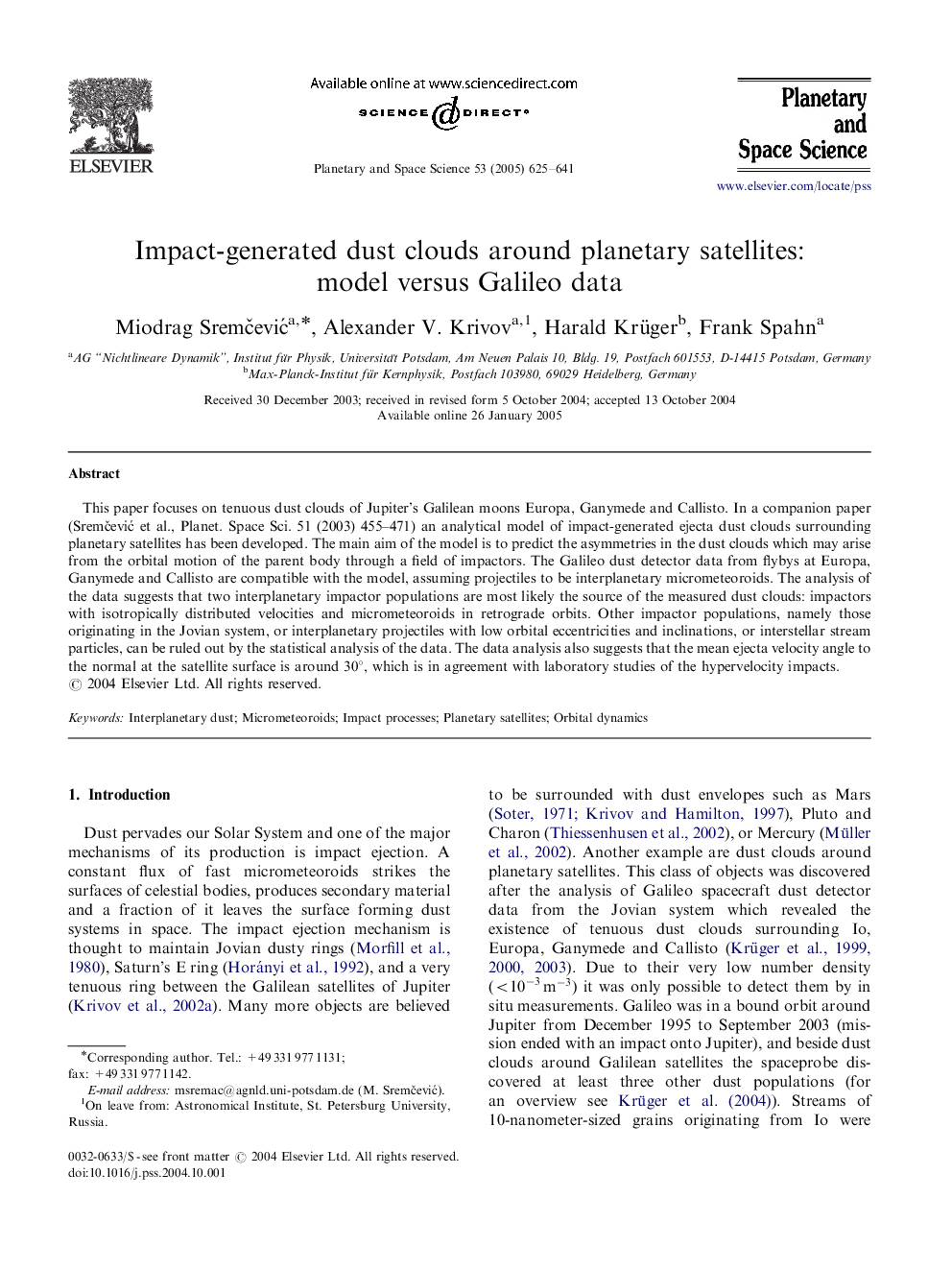| کد مقاله | کد نشریه | سال انتشار | مقاله انگلیسی | نسخه تمام متن |
|---|---|---|---|---|
| 10705634 | 1022390 | 2005 | 17 صفحه PDF | دانلود رایگان |
عنوان انگلیسی مقاله ISI
Impact-generated dust clouds around planetary satellites: model versus Galileo data
دانلود مقاله + سفارش ترجمه
دانلود مقاله ISI انگلیسی
رایگان برای ایرانیان
کلمات کلیدی
موضوعات مرتبط
مهندسی و علوم پایه
علوم زمین و سیارات
فیزیک زمین (ژئو فیزیک)
پیش نمایش صفحه اول مقاله

چکیده انگلیسی
This paper focuses on tenuous dust clouds of Jupiter's Galilean moons Europa, Ganymede and Callisto. In a companion paper (SremÄeviÄ et al., Planet. Space Sci. 51 (2003) 455-471) an analytical model of impact-generated ejecta dust clouds surrounding planetary satellites has been developed. The main aim of the model is to predict the asymmetries in the dust clouds which may arise from the orbital motion of the parent body through a field of impactors. The Galileo dust detector data from flybys at Europa, Ganymede and Callisto are compatible with the model, assuming projectiles to be interplanetary micrometeoroids. The analysis of the data suggests that two interplanetary impactor populations are most likely the source of the measured dust clouds: impactors with isotropically distributed velocities and micrometeoroids in retrograde orbits. Other impactor populations, namely those originating in the Jovian system, or interplanetary projectiles with low orbital eccentricities and inclinations, or interstellar stream particles, can be ruled out by the statistical analysis of the data. The data analysis also suggests that the mean ejecta velocity angle to the normal at the satellite surface is around 30°, which is in agreement with laboratory studies of the hypervelocity impacts.
ناشر
Database: Elsevier - ScienceDirect (ساینس دایرکت)
Journal: Planetary and Space Science - Volume 53, Issue 6, May 2005, Pages 625-641
Journal: Planetary and Space Science - Volume 53, Issue 6, May 2005, Pages 625-641
نویسندگان
Miodrag SremÄeviÄ, Alexander V. Krivov, Harald Krüger, Frank Spahn,